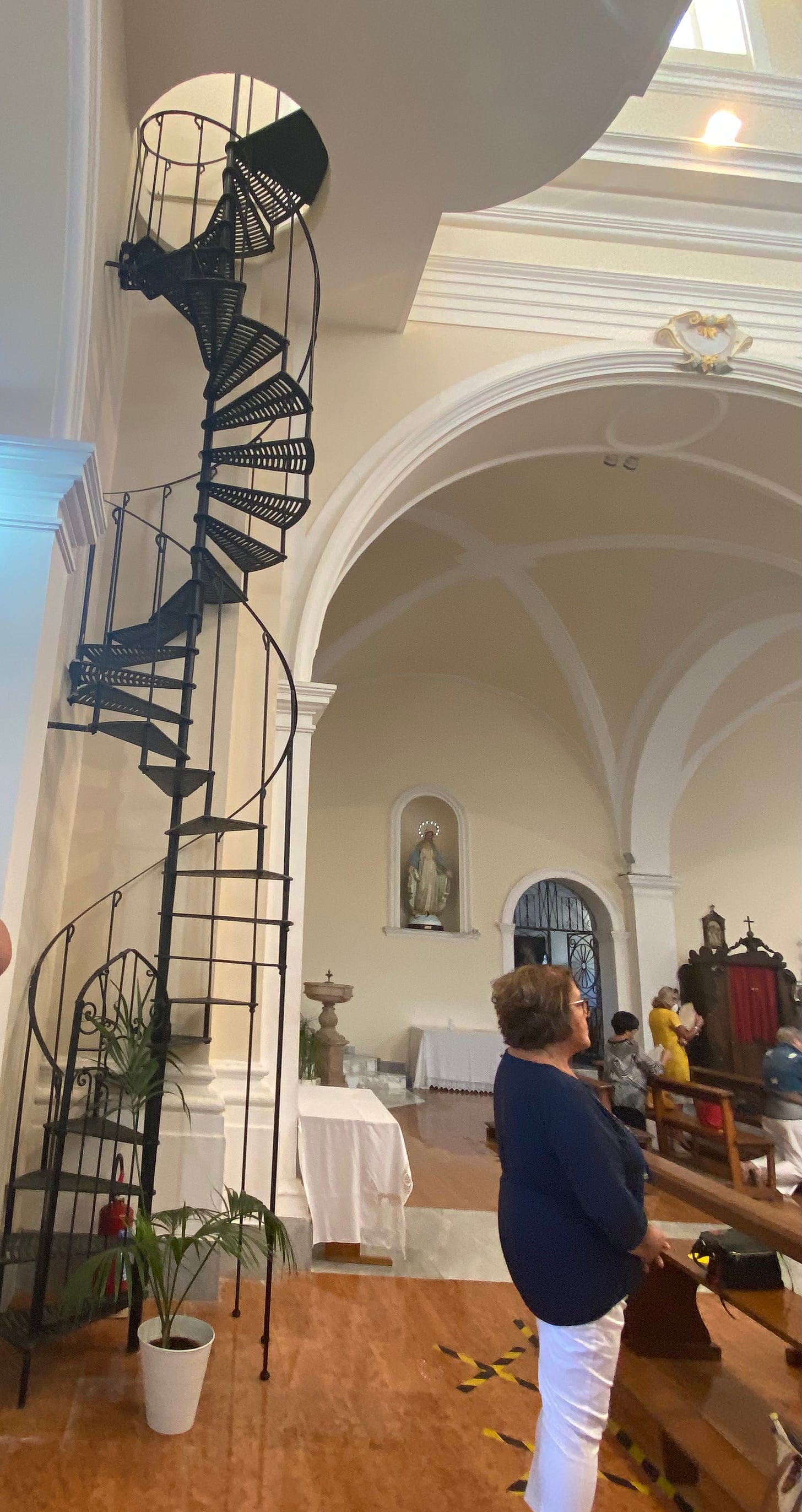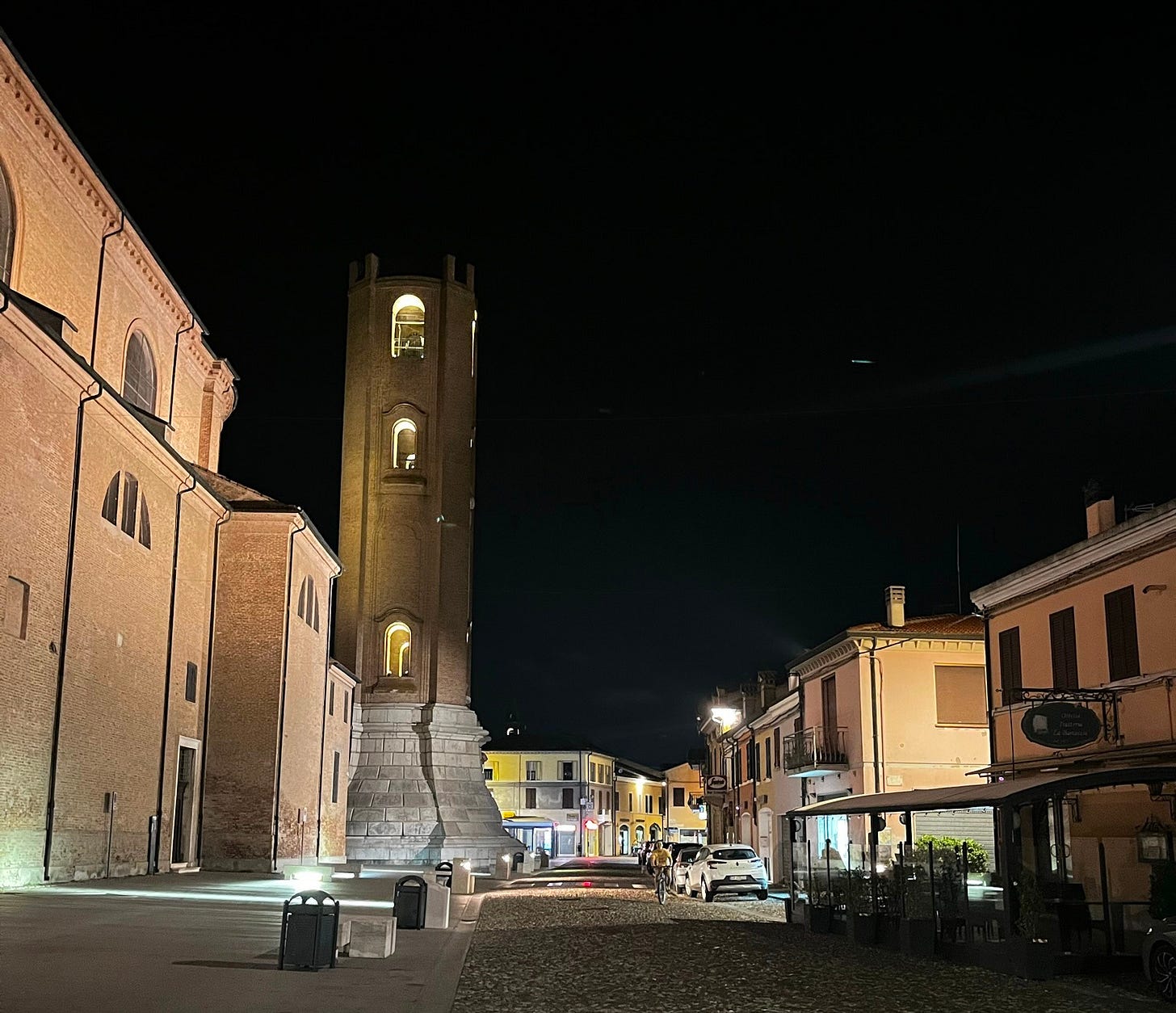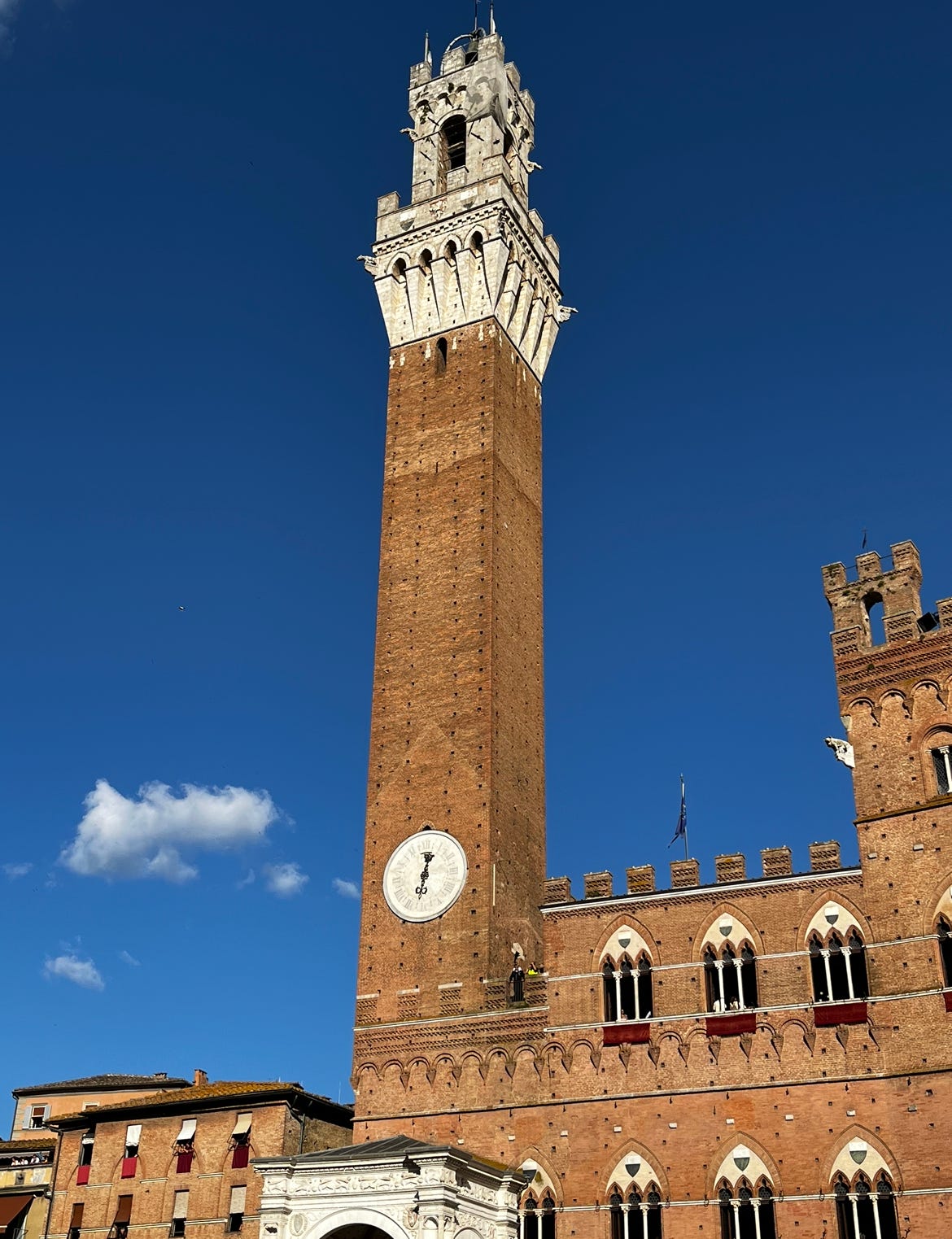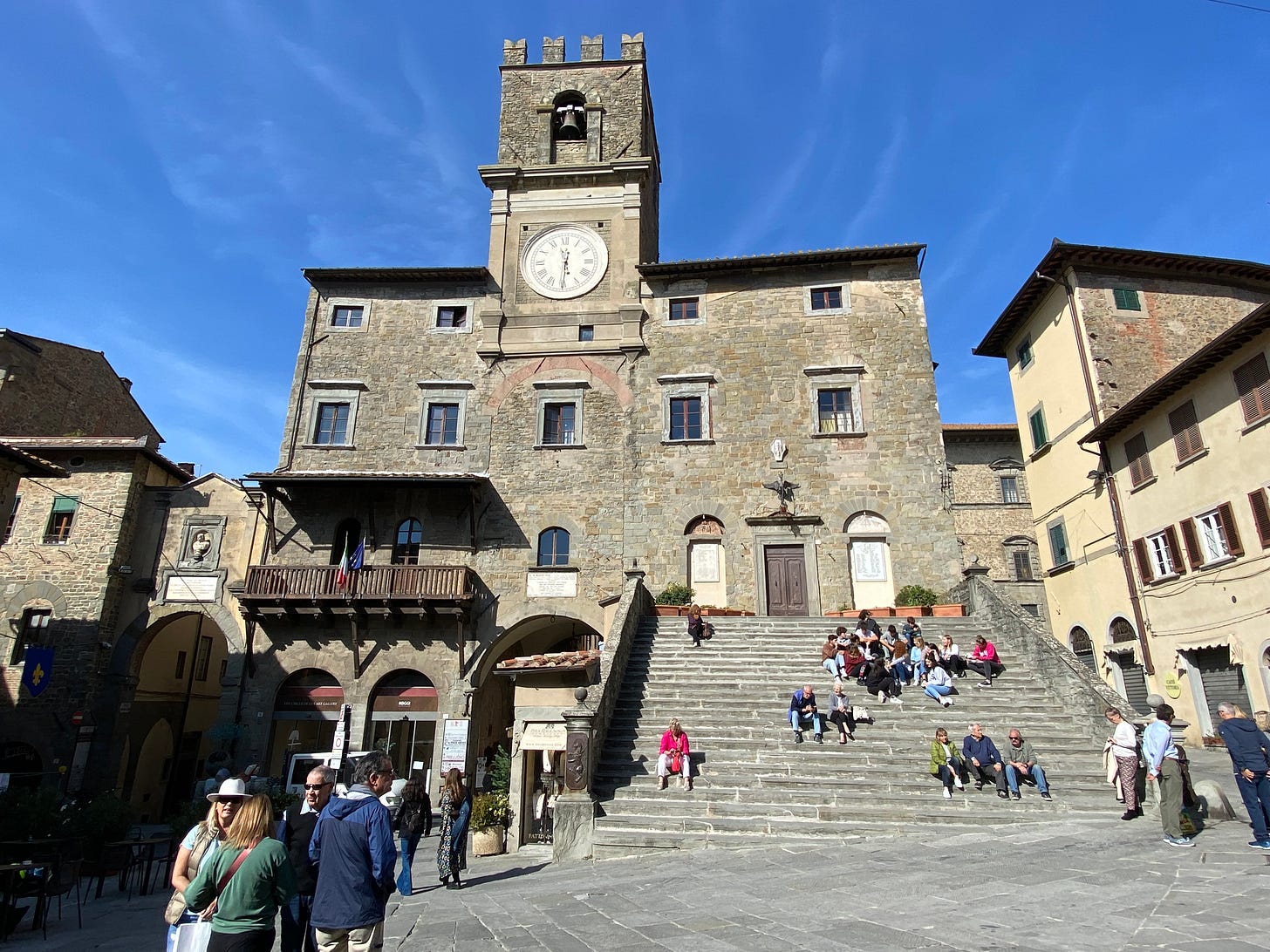Every morning, even before opening my eyes, I hear a sound that rises gently through the air: the bell tower. Il campanile.
Bells have fascinated me since childhood. In my hometown of San Vittore, I would run to church at every occasion. I was excited for Sunday masses, weddings, and even funerals, all occasions for me to ring the bells. And so, although I was the youngest of the crowd I joined the older boys and climbed the narrow spiral steps leading to the bell tower. My favorite was la campana maggiore, the big bell. I’d grip the rope and let it lift me as the bell swung side to side. Once, the clapper (il battaglio) broke loose and landed inches from my feet. I guess we could say that I was, um, saved by the bell, as I averted a morbid ending.
Bells are part of life here, as essential as espresso. They’re more than just part of the skyline. I campanili are the voice of the town, calling out the hour, the saints, the weddings, the funerals. They don’t just mark time; they fill it. Whether you're walking through a quiet piazza or sipping coffee on a side street, the bells are always part of the soundtrack.
There’s an old saying in Italy:
“Gli italiani non si sentono italiani, ma si sentono della loro città, del luogo dove arriva il suono del campanile.”
Italians don’t feel Italian; they feel they belong to the place where the bell tower can be heard.
Before Italy was a country, identity was local: your town, your dialect, your church bell. That sound told you who you were and where you belonged. The bell marked time, called people to worship, warned of danger, or celebrated something. It still does.
No two bell towers are the same, and no town wants to trade theirs for another’s. So strong is that pride that it even has a name: campanilismo.
Live under a bell tower long enough, and you begin to understand it.
Telling Time by Sound
I also learned to tell time by the bells, le campane dell’orologio, in the old village. Still today, many towns have clock bells, marking the hour, the half hour, and sometimes the quarter hour. Each town has its own rhythm.
I remember staying in Valle San Felice, in Trentino. The clock bell was just outside the house. I’d wake at midnight to twelve loud strikes. Luckily, the following hours were shorter.
The Language of Bells
Every bell has its own voice. And they speak a language most Italians instinctively understand:
o The Angelus rings three times a day , morning, noon, and evening, in three sets of three chimes, followed by a longer peal. A moment to pause.
o Sunday Mass is announced with a joyful, rising rhythm.
o Solemn days, Good Friday, funerals, are marked by slow, deep tolls.
o Feast days like Easter or a town’s patron saint day bring a joyful racket, with every bell ringing together in a jubilant cacophony.
Evening Angelus Bells in Colle village
Noon Bells in Casole d’Elsa
Funeral bells from Colle Val d’Elsa
A Bit of History: The Marinelli Bells
Some of Italy’s most cherished bells come from the Marinelli Foundry in Agnone, Molise. It’s the oldest bell foundry in Italy, and one of the oldest family-run businesses in the world. Founded at least as early as 1339, maybe earlier.
In 1924, Pope Pius XI honored the foundry with the title “Pontifical” for its work with the Church. Today, they still cast about 50 bells a year using traditional techniques, lost-wax casting, clay molds, and molten bronze at 1,200°C. It's slow work, precise, and deeply rooted in tradition.
The Art of Manual Bell Ringing
After WWII, many bell towers switched to automatic systems, but a few places still keep the old methods alive:
Verona – At Santa Anastasia, the Scuola Campanaria preserves the Veronese method. Bells swing in full circles, producing rich musical patterns.
Bologna – San Petronio’s ringers climb wooden platforms to control the bells by hand, a method dating back to the 1500s.
Limbiate (near Milan) – The Ambrosian method is seeing a revival, especially among younger generations.
Florence – Giotto’s Campanile still has hand-rung bells, some sounding just as they did centuries ago.
Rome – And then there are the Vatican bells, which speak not just to a city, but to the world.
Click below for the roman Campanaro
The bells of Italy aren’t just heard, they’re felt. They’re not background noise. They’re the heartbeat of daily life, the audible soul of the place. You don’t just hear them, you live by them.
The sound of the bells is like a good friend to me. They’re always nearby, steady and reassuring. They call out just to say they’re there. They remind me of what matters, a feast, a farewell, the passing of time. Sometimes they’re loud and insistent, sometimes quiet and distant. Then, just when you think they’ve gone silent, they speak up again for the next occasion. Like a friend, they don’t need to say much, their presence is enough. And like a good friend, you can’t part with them, not without feeling something’s missing.
And as I wrap up this letter the campanile strikes eleven times.
Buona notte.
















Thank you for another great story Tino. Always look forward to my Saturday morning read.
You've perfectly captured the soul of the Italian bell tower, not just an architectural element, but a living voice that marks time and defines a place's identity.
Your personal experience of running to the bell tower as a child reminded me of how deeply these sounds are woven into our childhood memories. I too learned to recognize the different "languages" of the bells, from festive joy to the solemnity of mourning, without anyone explicitly teaching me.